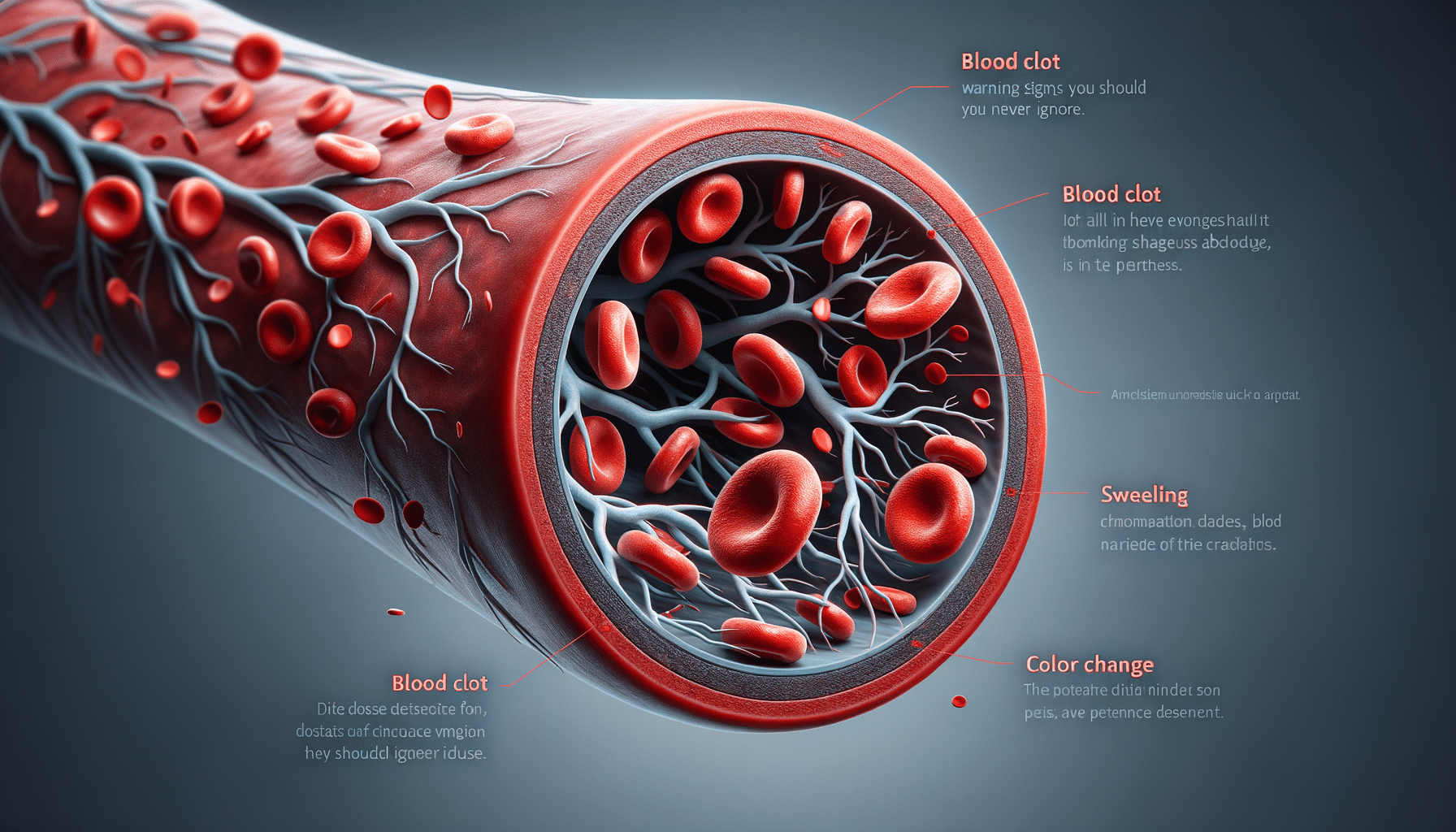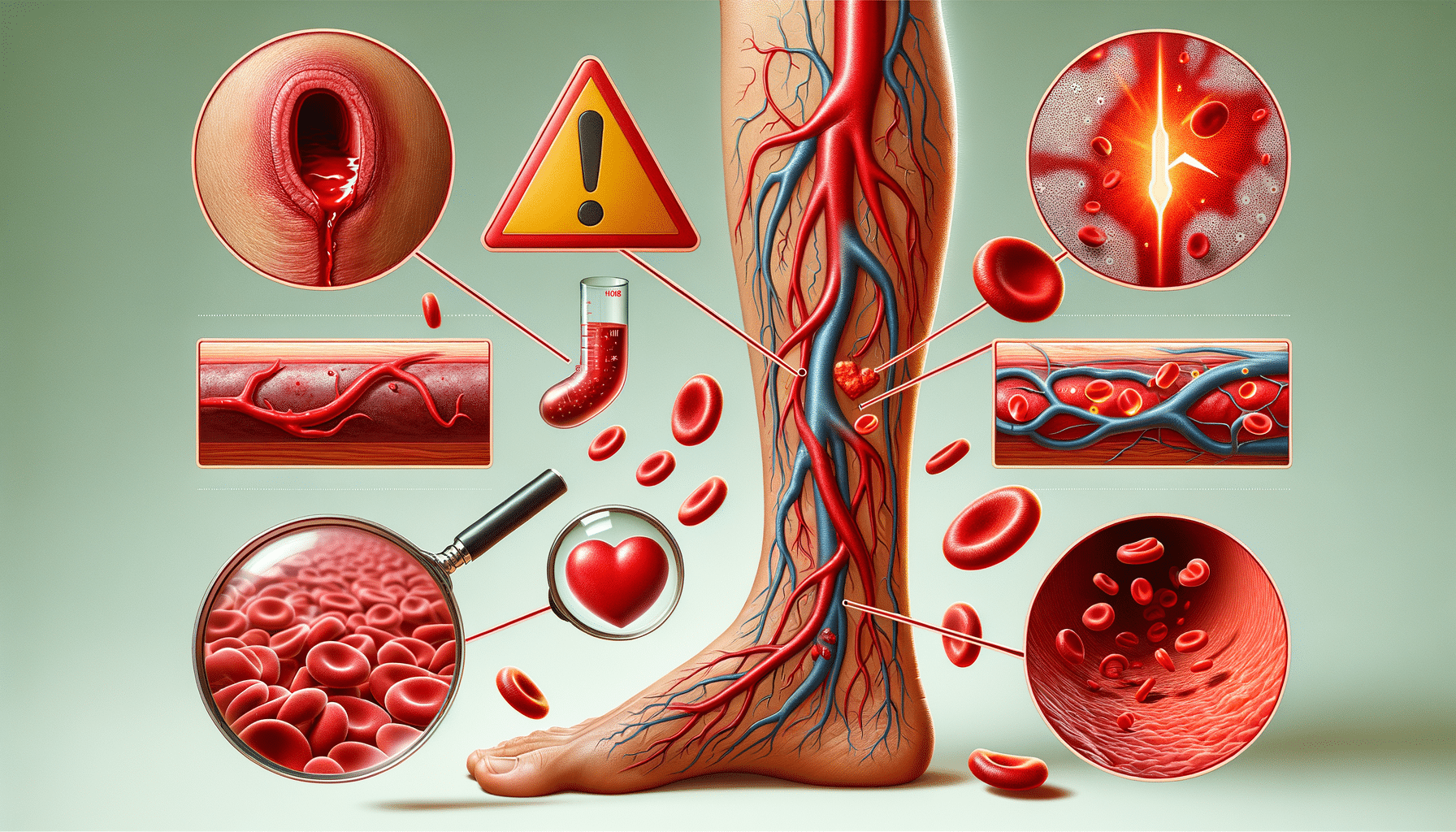
Blood Clot Warning Signs You Should Never Ignore
Introduction to Blood Clots
Blood clots are a serious medical condition that can lead to life-threatening complications if not addressed promptly. They occur when blood thickens and clumps together, forming a semi-solid mass. While blood clotting is a natural process that prevents excessive bleeding when injured, clots that form inappropriately within blood vessels can obstruct normal blood flow. This obstruction can lead to conditions such as deep vein thrombosis (DVT) or pulmonary embolism (PE), both of which require immediate medical attention.
Understanding the warning signs of blood clots is crucial for timely intervention and prevention of serious health issues. This article delves into the various symptoms and risk factors associated with blood clots, providing valuable insights to help you recognize and respond to these warning signs effectively.
Common Symptoms of Blood Clots
Recognizing the symptoms of blood clots can be challenging, as they often mimic other less serious conditions. However, some common signs should never be ignored:
- Swelling: One of the most prevalent symptoms, particularly in the legs, is swelling. This may occur in one leg and can be accompanied by pain or tenderness.
- Redness or Discoloration: A blood clot can cause the skin to appear red or discolored, often accompanied by warmth in the affected area.
- Shortness of Breath: If a clot travels to the lungs, it can lead to sudden shortness of breath, a potentially life-threatening situation.
- Chest Pain: Chest pain that worsens with deep breathing, coughing, or physical activity may indicate a pulmonary embolism.
It is important to note that these symptoms can vary depending on the location of the clot. Immediate medical evaluation is essential if you experience any of these warning signs.
Risk Factors for Blood Clots
Several factors can increase the risk of developing blood clots. Understanding these can help you take preventive measures:
- Prolonged Immobility: Extended periods of inactivity, such as long flights or bed rest, can slow blood flow and increase clot risk.
- Medical Conditions: Certain conditions like cancer, heart disease, and inflammatory disorders can elevate the risk of clot formation.
- Family History: A family history of blood clots or genetic disorders can predispose individuals to clotting issues.
- Lifestyle Factors: Smoking, obesity, and a sedentary lifestyle are significant contributors to clot risk.
Being aware of these risk factors and discussing them with your healthcare provider can aid in developing a personalized prevention strategy.
Preventive Measures and Lifestyle Changes
Prevention plays a key role in managing the risk of blood clots. Implementing certain lifestyle changes can significantly reduce your risk:
- Stay Active: Regular physical activity promotes healthy blood circulation, reducing the likelihood of clot formation.
- Maintain a Healthy Weight: Achieving and maintaining a healthy weight can lower the risk associated with obesity.
- Quit Smoking: Smoking cessation is crucial, as it significantly reduces the risk of cardiovascular issues and clots.
- Monitor Health Conditions: Managing conditions such as diabetes and hypertension effectively can help minimize clot risk.
Consulting with healthcare professionals for personalized advice is highly recommended, especially if you have existing health conditions or are at increased risk.
Conclusion: Acting on Warning Signs
Blood clots are a serious health concern that requires prompt attention. By understanding the warning signs and risk factors, you can take proactive steps to protect yourself. Recognizing symptoms such as swelling, redness, shortness of breath, and chest pain is vital for seeking timely medical intervention. Additionally, adopting a healthy lifestyle and managing existing health conditions can significantly reduce your risk of developing blood clots.
Always consult with healthcare providers to tailor prevention strategies to your specific needs. Remember, early detection and intervention can make a significant difference in outcomes when it comes to blood clots.


